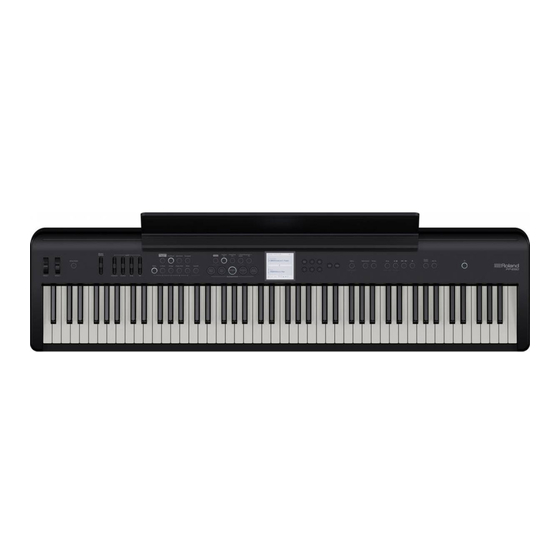
User Manuals: Roland FP-E50 Digital Piano
Manuals and User Guides for Roland FP-E50 Digital Piano. We have 3 Roland FP-E50 Digital Piano manuals available for free PDF download: Reference Manual, Quick Start Manual, User Manual
Roland FP-E50 Reference Manual (85 pages)
Brand: Roland
|
Category: Musical Instrument
|
Size: 5.68 MB
Table of Contents
Advertisement
Roland FP-E50 Quick Start Manual (10 pages)
Brand: Roland
|
Category: Musical Instrument
|
Size: 2.26 MB
Table of Contents
Roland FP-E50 User Manual (5 pages)
Brand: Roland
|
Category: Music Equipment
|
Size: 0.35 MB
Advertisement


